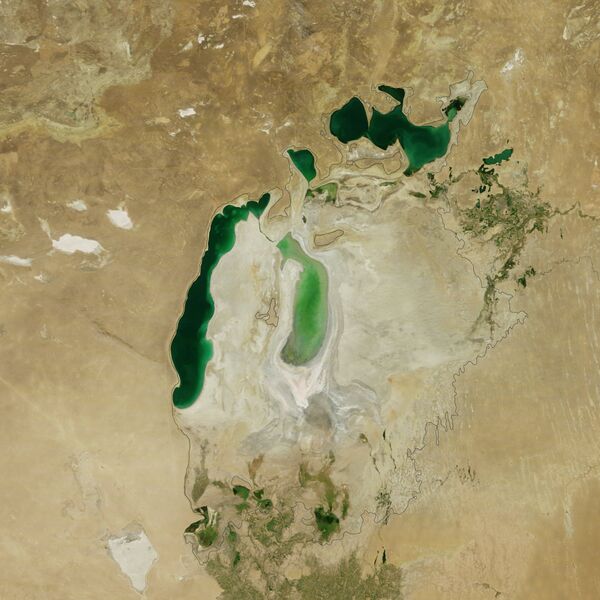MOSCOW, February 17 (RIA Novosti) – The Aral Sea has not lost as much water as feared, according to a new study of satellite images by scientists in the United States.
The sea in Central Asia, once the world’s fourth largest inland sea, has lost 90 percent of its volume in the last 50 years, in part because rivers that drained into it were diverted by Soviet irrigation projects.
But the study of images taken by NASA satellites between 2003 and 2012 found that only half of the water lost from the Aral Sea in the past decade has disappeared for good through evaporation or agricultural use.
The remaining half of the “vanishing” liquid has instead been concentrated upstream in the central part of the sea’s watershed, where nearly all the region’s farming takes place, NASA said in a statement on its website.
The Aral Sea watershed, which is more than twice the size of Texas, encompasses Uzbekistan and parts of Tajikistan, Turkmenistan, Kyrgyzstan and Kazakhstan.
Scientists had speculated that part of the devastating water loss might be due to declining rainfall. But the research by graduate student Kirk Zmijewski and assistant professor Richard Becker at the University of Toledo in Ohio found that precipitation levels in the area have remained steady over the last 30 years.
Despite the more hopeful situation with the sea’s water level in the short term, the study concluded that “the long-term water picture for the Aral Sea watershed remains bleak.”
Scientists have warned that the decline in freshwater supplies poses a major environmental concern that will increase pressure on agriculture, economics and politics as the world’s population continues to rise.


